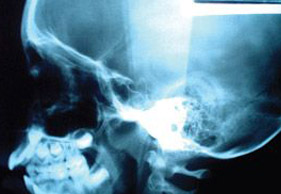Many amateur and professional athletes are sidelined with injuries that could be avoided, or problems that do not respond to ordinary treatment. Others are playing, but at less than peak performance, simply because their mechanical systems are dysfunctional. Chiropractic approach to health relates closely to the needs of the sports participant. Chiropractic is a natural health care method that stresses the importance of keeping all the systems of the body functioning efficiently so that the athlete enjoys peak performance, a minimum injury risk and fast recuperative ability.
Chiropractic is a healthcare profession focused on the diagnosis and treatment of neuromusculoskeletal conditions. The primary treatment of the chiropractor is manipulation of areas of the spine or surrounding joints, which are restricted in mobility and/or dysfunctional. The adjustment will help to restore proper mobility and function to the spinal and pelvic joints, helping to decrease pain and improve performance. Other treatment modalities used may include massage, electrotherapy, trigger point therapy, dry needling, strapping and rehabilitative exercise.
Injuries like sprains (ankle), strains (pulled muscles), tendonitis (tennis elbow) and bursitis (shoulder pain) and joint problems in the shoulder, elbow, wrist, hand, hip, knee, ankle and foot can all be treated effectively with chiropractic care. The beauty of chiropractic is not only that it is drug-free and surgery-free, but also that it is preventative and performance-enhancing care. Maintaining proper alignment allows athletes to be prepared for their sports. Many of the greatest athletes in the world are adjusted as part of their ‘training’ regimen.
Frequently Asked Questions
Question : Can chiropractic help improve athletic performance?
Answer : Yes. In many cases, the doctor can also offer advice on safe, healthy ways to improve peak performance. A chiropractor’s training and experience with the dynamics of the human body qualifies him or her to diagnose and successfully treat a wide range of injuries and conditions.
Question : What can a chiropractor do for me if I’m having leg or knee pain?
Answer : These may indicate a spinal problem, pelvic imbalance, an inappropriate training programme, overuse injuries or stress conditions to soft tissues or bone. These conditions can often be effectively managed if the problem is identified early and appropriate treatment is followed. X-rays may also be required if certain types of pathology are suspected. Your training regimen and schedule may be reviewed, to see if there are any problem areas to correct. In addition to any chiropractic adjustments your doctor may perform, he or she may also recommend that you consult a podiatrist for orthotics and perform home rehabilitation exercises.
Question : What kind of exercises do I need to do at home (rehab)?
Answer : Injured soft tissue and muscles/joints can be strengthened with rehab exercises. An entire spectrum of these can be recommended by your chiropractor after an examination of your needs and condition. Many are very simple and can be done in a few minutes at home or at the office. You may also be referred to a biokineticist for a more comprehensive and intensive rehab programme.
Question : What can my chiropractor do to stop pain?
Answer : The treatment you receive will probably focus in general on reducing swelling, relieving pain, restoring functional movement through manipulation (adjustment), protecting the area from additional stress, and strengthening your foundation. Depending on your specific condition, your chiropractor may instruct you to do some or all of the following things after you leave the clinic:
REST – a decrease or stoppage of running and jumping exercises is often indicated
ICE – to help bring down any swelling
EXERCISE – to help build muscle strength and joint stability
STRETCHING – flexibility improves movement and function, helping to prevent injury or rehabilitate damaged muscles/ligaments/joints

